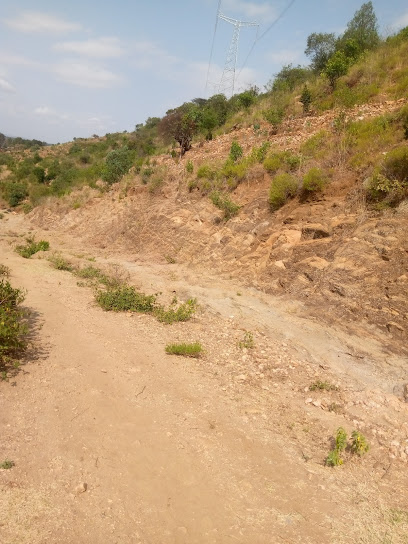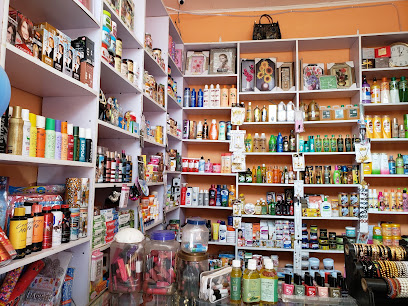
Discover the Wonders of Yabelo Wildlife Sanctuary
Yabelo Wildlife Sanctuary: A hidden Ethiopian gem where stunning landscapes, unique wildlife, and rich cultural heritage come together for an unforgettable adventure.
Yabelo Wildlife Sanctuary, located in the Oromia Region of Ethiopia, is a hidden gem for nature lovers and wildlife enthusiasts. The sanctuary spans over 2,500 square kilometers and is home to a variety of unique flora and fauna. Visitors can expect to see an array of animals including the endemic Swayne's hartebeest, Grevy's zebras, and different species of antelope. The sanctuary is also a birdwatcher's paradise, with over 200 bird species recorded in the area, such as the rare White-tailed Swallow and the Ethiopian Bush-crow. The landscape of Yabelo is as captivating as its wildlife. The sanctuary features a mix of savannah, open woodland, and acacia-dominated bushland, offering stunning views and excellent photography opportunities. The area is rich in cultural heritage as well, with several local tribes inhabiting the region and maintaining their traditional way of life. This provides an enriching experience for those interested in learning about the indigenous cultures of Ethiopia. Yabelo Wildlife Sanctuary is not just about wildlife and scenery; it also offers various activities for tourists. You can go on guided wildlife tours, birdwatching expeditions, and even hiking trips through the sanctuary's diverse terrains. The best time to visit is between October and March when the climate is mild, and wildlife sightings are more frequent. Whether you're an avid nature enthusiast or simply looking for a peaceful retreat, Yabelo Wildlife Sanctuary promises an unforgettable experience.
Local tips in Yabelo Wildlife Sanctuary
- Best time to visit is October to March for mild weather and frequent wildlife sightings.
- Don't forget your binoculars; the sanctuary is a birdwatcher's paradise.
- Hire a local guide to enhance your experience and learn about the area's flora and fauna.
- Carry plenty of water and sun protection, as the area can get quite hot during the day.
- Respect local customs and traditions when interacting with indigenous tribes.
Discover the Wonders of Yabelo Wildlife Sanctuary
Yabelo Wildlife Sanctuary, located in the Oromia Region of Ethiopia, is a hidden gem for nature lovers and wildlife enthusiasts. The sanctuary spans over 2,500 square kilometers and is home to a variety of unique flora and fauna. Visitors can expect to see an array of animals including the endemic Swayne's hartebeest, Grevy's zebras, and different species of antelope. The sanctuary is also a birdwatcher's paradise, with over 200 bird species recorded in the area, such as the rare White-tailed Swallow and the Ethiopian Bush-crow. The landscape of Yabelo is as captivating as its wildlife. The sanctuary features a mix of savannah, open woodland, and acacia-dominated bushland, offering stunning views and excellent photography opportunities. The area is rich in cultural heritage as well, with several local tribes inhabiting the region and maintaining their traditional way of life. This provides an enriching experience for those interested in learning about the indigenous cultures of Ethiopia. Yabelo Wildlife Sanctuary is not just about wildlife and scenery; it also offers various activities for tourists. You can go on guided wildlife tours, birdwatching expeditions, and even hiking trips through the sanctuary's diverse terrains. The best time to visit is between October and March when the climate is mild, and wildlife sightings are more frequent. Whether you're an avid nature enthusiast or simply looking for a peaceful retreat, Yabelo Wildlife Sanctuary promises an unforgettable experience.
When is the best time to go to Yabelo Wildlife Sanctuary?
Unmissable attractions to see
Adola Shakiso Gold Mining
Explore the rich mineral heritage at Adola Shakiso Gold Mining, where breathtaking landscapes meet local culture in a unique Ethiopian experience.

Leykun Park
Explore Leykun Park, an enchanting garden in Ethiopia, perfect for relaxation and nature appreciation amidst vibrant flora and serene landscapes.

Rakko kinjjo (rakko mountain)
Explore Rakko Kinjjo in Ethiopia: A breathtaking mountain destination with stunning views and rich biodiversity, perfect for nature lovers and adventurers.

Park ፓርክ
Explore the serene landscapes of Park መርግቤ in Shakiso, Ethiopia, where nature and tranquility await your discovery.

ለይኩም ፓርክ Nageelle Boorana Paarkii Leeykum(Nagelle Borana Leykum Garden)
Explore the serene beauty of Nagelle Borana Leykum Garden in Yebelo, a tranquil escape for nature lovers seeking peace and relaxation.

Arero Forest
Explore the untouched beauty of Arero Forest, a national treasure in Ethiopia perfect for adventure and tranquility seekers.

Daboobetti
Discover the tranquil beauty of Daboobetti Garden in Yebelo, a serene escape filled with lush greenery and vibrant flora.

Yabello Sanctuary
Discover the stunning wildlife and serene landscapes of Yabello Sanctuary in Ethiopia, a paradise for nature lovers and eco-tourists alike.

Soil erosion canyon Borena
Explore the breathtaking Soil Erosion Canyon in Borena, Ethiopia, a hidden gem for hiking enthusiasts and nature lovers seeking stunning landscapes.

እስከዳር ቡና
Discover the tranquil beauty of Yebelo Park, a lush green oasis in the heart of Yebelo, perfect for relaxation, recreation, and nature exploration.

Baha-Galma Valley
Explore the majestic Baha-Galma Valley, a natural paradise in Ethiopia, rich in biodiversity and breathtaking landscapes.

Ebranista
Discover the serene beauty of Ebranista, a tranquil garden in Yebelo, where nature and relaxation await in a lush oasis.

ለይኩም Garden
Discover tranquility at Yebelo Garden, a vibrant oasis in Ethiopia, perfect for relaxation, exploration, and unforgettable memories.

superstampsgamingsuckslol
Experience the serene beauty of Garadase Park, a peaceful retreat in the heart of nature that invites you to relax and explore.

Eskedar ቡና
Experience tranquility and natural beauty at Eskedar Park in Yebelo, a perfect escape for relaxation and cultural immersion.

Essential places to dine
Elsabet's Place
Discover the essence of Ethiopian breakfasts at Elsabet's Place in Yebelo, where every meal is a celebration of flavor and tradition.

Abo Sharif Restaurant
Discover authentic Ethiopian cuisine at Abo Sharif Restaurant in Metagefersa - a culinary experience rich in flavor and tradition.

Markets, malls and hidden boutiques
All In One Souvenir & Gift Shop
Discover unique Ethiopian crafts and souvenirs at All In One Souvenir & Gift Shop in Addis Ababa, perfect for every traveler.

Hayat Building Materials Selling Store
Discover local craftsmanship at Hayat Building Materials Store in Yebelo, showcasing a wide range of building supplies and architectural heritage.

REDU_Electronics_Work Shop
Discover cutting-edge electronics and local craftsmanship at the REDU Electronics Workshop in Yebelo, a tech haven for every traveler.

Boss Vehicle Spare Parts minishop
Explore Yebelo's Boss Vehicle Spare Parts Minishop for quality auto parts and a taste of local automotive culture.

Hager Maryam
Explore Hager Maryam, a vibrant shopping mall in Agere Mariyam, Ethiopia, offering a mix of local goods, fashion, and delicious cuisine.

Yab/Allah Yabello
Yab/Allah Yabello: Discover unique Ethiopian home goods and crafts in a vibrant atmosphere that celebrates local culture.

Adonay Printing and Electronics
Explore the latest in electronics and printing services at Adonay Printing and Electronics, the tech hub of Agere Mariyam.

WAKO DUBA
Discover unique Ethiopian home goods at WAKO DUBA in Yebelo - where culture meets craftsmanship.

Sefre selam anshiti shop
Experience the vibrant culture of Ethiopia at Sefre Selam Anshiti Shop in Agere Mariyam, where local crafts and delicacies await.

Sina Fashion
Discover the perfect blend of local culture and contemporary style at Sina Fashion, Agere Mariyam's top women's clothing boutique.

Helena Cosmetics
Explore Helena Cosmetics in Yebelo for an exquisite range of beauty products and expert advice to elevate your cosmetics game.

Dashen beer Yabelo & area disteributor store
Experience the rich culture of Ethiopia through the local flavors of Dashen Beer at Yabelo Distributor Store.

አድነው ተከስተ ጠቅላላ ሸቀጣ ሸቀጥ
Discover local treasures and authentic Ethiopian products at አድነው ተከስተ ጠቅላላ ሸቀጣ ሸቀጥ in Yebelo, a must-visit for any traveler.

Aman brand sheos
Explore stylish footwear at Aman Brand Shoes in Agere Mariyam, where quality meets elegance in every step.

Ramadan Electric Equipment Selling Shop
Explore Yebelo's Ramadan Electric Equipment Selling Shop: Your destination for quality electronics and local insights.

Essential bars & hidden hideouts
Telitele Ber HOTEL
Discover the authentic flavors of Ethiopia at Telitele Ber HOTEL, where culinary tradition meets a vibrant dining atmosphere.

Asnake bar and restorant
Discover the vibrant flavors and welcoming atmosphere at Asnake Bar and Restaurant in Agere Mariyam, a must-visit for all food lovers.

Elsabet's Place
Experience the authentic flavors of Ethiopia at Elsabet's Place, a delightful breakfast restaurant in Yebelo, perfect for starting your day.

Negat Restaurant
Experience the authentic taste of Ethiopia at Negat Restaurant, where traditional flavors and warm hospitality await.

Faaya
Discover the vibrant nightlife at Faaya, a lively bar in Metagefersa offering local drinks and a welcoming atmosphere for travelers.

Melala
Discover the vibrant atmosphere and traditional flavors of Melala, a lively bar in Shakiso, Ethiopia, that showcases local culture and hospitality.

H.Gumi Cafe &Restaurant
Experience the vibrant flavors of Ethiopian cuisine at H.Gumi Cafe & Restaurant in Finchawa, where every meal is a celebration of local culture.

Musa
Discover the culinary delights of Musa in Yebelo, where authentic Ethiopian flavors meet a warm and inviting dining experience.

Golden Turkish Bar Restorant
Experience authentic Turkish cuisine in Yebelo at Golden Turkish Bar Restaurant, where tradition meets taste and hospitality.

Tamiru Imu Restaurant
Experience authentic Ethiopian cuisine at Tamiru Imu Restaurant in Yebelo, where local flavors and warm hospitality await.

Alem Bar and Restaurant_አለም ባርና ሬስቶራንት
Discover the vibrant flavors of Ethiopia at Alem Bar and Restaurant in Yebelo, where family-friendly dining meets authentic cuisine.

Borana university staff cafe
Experience a cozy breakfast at Borana University Staff Cafe in Yebelo, where local flavors meet welcoming ambiance.

Oromia bar and restaurant
Experience authentic Ethiopian cuisine at Oromia Bar and Restaurant, a hidden gem in Agere Mariyam, offering rich flavors and warm hospitality.

Tariku migeb bet
Experience the authentic taste of Ethiopia at Tariku Migeb Bet, a charming restaurant in Yebelo, serving traditional dishes with a warm welcome.

Medhanit Restaurant
Discover the essence of Ethiopian cuisine at Medhanit Restaurant, where authentic flavors and warm hospitality await every visitor.

Local Phrases about Yabelo Wildlife Sanctuary
-
- HelloSelam
[sɛlɑm] - GoodbyeTafari Godhana
[tɑfɪri gɑdɑnɑ] - YesEe
[eɪ] - NoAla
[ɑlɑ] - Please/You're welcomeEjjennoo
[ɛʤːɛnnoʊ] - Thank youGalatoomi
[gɑlɑtoʊmi] - Excuse me/SorryFayyadama
[faɪjːɑdɑmɑ] - How are you?Akka dhufee?
[ækːɑ dhuːfiː] - Fine. And you?Dhufte. Akkuma?
[dhuftɛ. ækːumɑ] - Do you speak English?Inni Ingliziffa dhufu?
[ɪnni ɪŋglizɪfːɑ dhuːfu] - I don't understandHarka qabnu
[hɑrkɑ kɑbnʊ]
- HelloSelam
-
- I'd like to see the menu, pleaseAkkuma menuu haadha jedhe?
[ækːumɑ mɛnuː hɑːdhɑ ʤɛdʰɛ] - I don't eat meatNaa gara morkoo hin qabdu
[nɑː gɑrɑ mɔrkʷoʊ hɪn qɑbdʊ] - Cheers!Dhiifama!
[dʰiːfɑmɑ] - I would like to pay, pleaseAkkuma bilisa jedhe
[ækːumɑ bɪlɪsɑ ʤɛdʰɛ]
- I'd like to see the menu, pleaseAkkuma menuu haadha jedhe?
-
- Help!Dhiifne
[dʰiːfnɛ] - Go away!Dhukkubsi
[dʰukːubsi] - Call the Police!Polisii nagaan deebi'ee
[polisii nɑgɑːn dɛːbɪʔɛ] - Call a doctor!Dhoktara nagaan deebi'ee
[dʰɔktɑrɑ nɑgɑːn dɛːbɪʔɛ] - I'm lostKan dhufu
[kɑn dhuːfu] - I'm illKan godhu
[kɑn gɑdhu]
- Help!Dhiifne
-
- I'd like to buy...Akkuma irratti injifannoo dha
[ækːumɑ ɪrɑtti ɪnʤɪfɑnnʊ ðɑ] - I'm just lookingAkkuma gara kijibee
[ækːumɑ gɑrɑ kɪʤɪbɛ] - How much is it?Dhaloota keessanii?
[dʰɑloʊtɑ keːsːɑniː] - That's too expensiveDadoo itti ka'i
[dɑdʊ ɪtːi kɑʔi] - Can you lower the price?Dhaloota kana irraa hin qabdu?
[dʰɑloʊtɑ kɑnɑ ɪrɑː hɪn qɑbdʊ]
- I'd like to buy...Akkuma irratti injifannoo dha
-
- What time is it?Mitiin keessanii?
[miːtiːn keːsːɑniː] - It's one o'clockHawwa miti
[hɑwwɑ miːti] - Half past (10)Kutaa (10) duwwaa miti
[kutɑː (10) duwwɑ miːti] - Morningergaa
[ɛrgɑː] - Afternoondabalata
[dɑbɑlɑtɑ] - Eveningsa'aa
[sɑʔɑː] - Yesterdayguddisu
[gʊddɪsu] - Todayguyyaa
[gʊjːɑː] - Tomorrowsana
[sɑnɑ] - 1tokkoffa
[tɔkːɔfːɑ] - 2lafa
[lɑfɑ] - 3sodda
[sodːɑ] - 4afur
[ɑfʊr] - 5jira
[ʤɪrɑ] - 6dodda
[dodːɑ] - 7seera
[sɛrɑ] - 8saamtu
[sɑːmtu] - 9sadeet
[sɑdɛːt] - 10lakkoofsa
[lɑkːɔfːsɑ]
- What time is it?Mitiin keessanii?
-
- Where's a/the...?... hin geenyaa?
[hɪn gɛːnjɑː] - What's the address?Akkamitti geessanii?
[ækːɑmɪtti geːsːɑniː] - Can you show me (on the map)?Kan akka... sa'aa hin qabu?
[kɑn ækkɑ... sɑʔɑː hɪn qɑbu] - When's the next (bus)?Bara (bas) akka ta'e?
[bɑrɑ (bɑs) ækkɑ tɑʔɛ] - A ticket (to ....)Bara (....) akka ta'ee
[bɑrɑ (....) ækkɑ tɑʔe]
- Where's a/the...?... hin geenyaa?
History of Yabelo Wildlife Sanctuary
-
Yabelo Wildlife Sanctuary, located in the Oromia Region of southern Ethiopia, was established in the early 1970s. The sanctuary was created to protect the unique flora and fauna of the region, particularly the endemic species such as the Ethiopian bush-crow and the white-tailed swallow. The area was chosen due to its distinctive ecosystem, which includes savannah grasslands, acacia woodlands, and rocky hills.
-
The Borana people, an indigenous pastoralist community, have lived in the Yabelo area for centuries. They have developed a deep understanding and respect for the land and its wildlife. The Borana practice a traditional system of land management known as 'Tula Wells,' an ancient water management system that has sustained their way of life in the arid environment. Their knowledge and practices have been crucial in maintaining the ecological balance of the sanctuary.
-
Over the years, various national and international conservation organizations have collaborated to protect the biodiversity of Yabelo Wildlife Sanctuary. Efforts have included anti-poaching measures, habitat restoration projects, and community engagement programs to involve local residents in conservation activities. These initiatives have been essential in preserving the sanctuary's unique species and habitats.
-
In recent decades, there has been a push to develop ecotourism in Yabelo Wildlife Sanctuary. This initiative aims to provide sustainable economic opportunities for local communities while promoting the conservation of natural resources. Tourist activities include guided wildlife tours, bird watching, and cultural exchanges with the Borana people. Ecotourism has helped raise awareness about the sanctuary's ecological significance and cultural heritage.
-
Yabelo Wildlife Sanctuary has attracted researchers from around the world, drawn by its unique ecosystems and endemic species. Studies conducted in the sanctuary have contributed to a greater understanding of the region's biodiversity, including the behavior and conservation needs of rare species like the Ethiopian bush-crow. Research findings have informed conservation strategies and highlighted the importance of the sanctuary on a global scale.
Yabelo Wildlife Sanctuary Essentials
-
Yabelo Wildlife Sanctuary is located in the Borena Zone of the Oromia Region in southern Ethiopia. The closest major city with an international airport is Addis Ababa, approximately 570 kilometers north of Yabelo. From Addis Ababa, you can travel by car or bus to Yabelo. The journey typically takes around 8 to 10 hours by road. There are also domestic flights available to the nearby town of Moyale, from where you can hire a taxi or arrange for local transportation to Yabelo.
-
Within Yabelo and its surroundings, transportation options include local taxis and minibuses, which are relatively inexpensive. For those looking to explore the sanctuary and its remote areas, renting a 4x4 vehicle is recommended due to the rough terrain. Guided tours are also available and often include transportation. Walking is a viable option within the sanctuary for short distances and guided walks.
-
The official currency in Ethiopia is the Ethiopian Birr (ETB). Credit cards are not widely accepted in rural areas like Yabelo, so it is advisable to carry sufficient cash. ATMs are scarce, so it is wise to withdraw cash in larger towns or cities before heading to Yabelo. Ensure you have smaller denominations of Birr for easier transactions in local markets and for tipping.
-
Yabelo is generally safe for tourists, but standard travel precautions should be taken. Avoid walking alone at night in secluded areas and always keep an eye on your belongings. While there are no specific high-crime areas targeting tourists, it is advisable to stay vigilant, especially in crowded places such as markets. It is also recommended to travel with a guide when exploring remote areas of the sanctuary.
-
In case of emergency, dial 991 for police assistance and 907 for medical emergencies. The nearest medical facilities are located in Yabelo town, but they may be basic, so it's advisable to have comprehensive travel insurance that includes medical evacuation. For minor health issues, there are pharmacies in Yabelo where you can purchase over-the-counter medications.
-
Fashion: Do dress modestly, especially in local communities. Avoid wearing revealing clothing. Religion: Do respect local customs and traditions. Always ask for permission before taking photographs of people or religious sites. Public Transport: Do be respectful and give up your seat to elderly passengers. Don’t eat or drink on public transport. Greetings: Do greet people with a handshake. A slight bow of the head is also a sign of respect. Eating & Drinking: Do try local dishes and accept food offerings graciously. Don’t refuse hospitality, as it is considered impolite.
-
To experience Yabelo Wildlife Sanctuary like a local, visit the local markets where you can buy fresh produce and traditional Ethiopian goods. Engage with locals, as they are often friendly and willing to share stories about their culture and the sanctuary. Don’t miss the chance to explore the unique flora and fauna with a knowledgeable guide who can provide insights into the local ecosystem. For a truly immersive experience, consider participating in community-based tourism initiatives that support local livelihoods.
Nearby Cities to Yabelo Wildlife Sanctuary
-
Things To Do in Jinka
-
Things To Do in Awasa
-
Things To Do in Kitale
-
Things To Do in Eldoret
-
Things To Do in Addis Ababa
-
Things To Do in Nakuru
-
Things To Do in Mbale
-
Things To Do in Naivasha
-
Things To Do in Kisumu
-
Things To Do in Nairobi
-
Things To Do in Lira
-
Things To Do in Debre Markos
-
Things To Do in Gulu
-
Things To Do in Jinja
-
Things To Do in Harar






